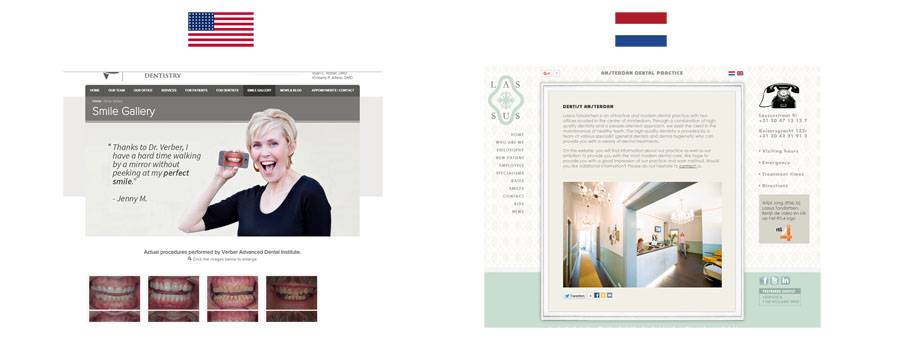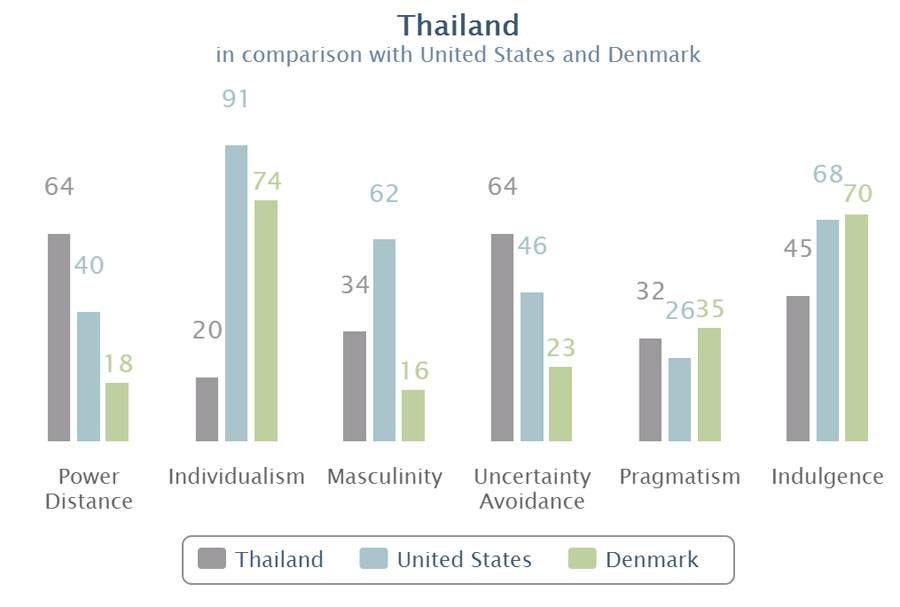The Role of Culture in Website Localization
Culture is a difficult concept to define. Understanding cultural differences and how various cultures experience the world around them is key to understanding the buying habits of your products and services, especially when it comes to international ecommerce.
For many companies, it seems like a straight-forward process; offer products and services through an eCommerce platform and translate to native languages of any country where the site will be perused. However, it is much more complex than that.
Companies are realizing more and more the importance of "localization" when it comes to bridging the gap between people of different cultures. Effective localization involves a great deal of personalization; a process involving changes to user experience, imagery, context of what is written and even the overall values presented in the company messaging.
How Culture Influences Design?
Consider research performed by Yoast.com, a web-based company that specializes in website optimization. The study found that while dentist's websites in America featured images of smiling happy people with bright white smiles, the dentist's websites in the Netherlands had virtually no imagery showcasing white smiles. In fact, there were no "smile galleries" on any of the dentist's websites in the study because white teeth and bleaching services are not culturally as important as it appears to be in America.

This very specific example only involves imagery and dentist's websites in two countries. It's easy to then imagine the potential differences regarding how other products and services are received when presented to audiences of different cultures. Something as seemingly simple as imagery could have a huge impact on eCommerce success -or failure- if the time is not taken to first understand a localized culture.
The Science of Culture
In the mid 1960's, Geert Hofstede created the Personnel Research Department at IBM Europe. Although he didn't know it at the time, the work he performed at IMB Europe would forever give marketers a scientific foundation for discussing culture. Hofstede's Cultural Dimension Theory rates cultures based on 5 dimensions: Individualism/Collectivism; Uncertainty Avoidance; Power Distance; Masculinity/Femininity; and Long Term Orientation. (In 2010, Hofstede added a sixth dimension, Indulgence vs Self Restraint, but for the purpose of the blog, we'll ignore this one.)
As online marketers, we use these dimensions to help determine how we should modify an e-commerce experience to adapt it for new markets and countries.
Let's consider these dimensions for a handful of countries and see if we can create any hypotheses:

Individualism/Collectivism
This refers to degree to which individuals are integrated into groups. Individualistic societies emphasize personal achievements and individual rights. Collectivistic societies emphasize group affiliations and loyalty. To this extent, it is more common for websites in collectivistic societies to feature photos that represent community and harmony than in a website tailored for an individualistic society. Therefore, based on the chart above, an ecommerce store designed for Thai consumers may want to feature how their products fit in the context of a group like a family, rather than an individual.
Uncertainty Avoidance
This dimension refers to the degree of tolerance for uncertainty and ambiguity. Cultures with low uncertainty avoidance have fewer rules and are more pragmatic. Cultures with high uncertainty are more emotional and typically have more rules, laws and regulations to protect themselves from risks. Ever think how every American commercial or website requires legal terms in small copy? This is largely because we are fairly risk averse, but based on the chart, not as risk averse as Thailand.
Power Distance
Power distance refers to extent which less powerful members of organizations accept that power is distributed equally. High power distance countries are more autocratic and low power distance countries are more democratic. Access to information is restricted to those who are low on the power scale in a culture with high power distance. For a website, this may mean that more importance is placed on user roles and permissions; limiting the information that everyone gets to see.
Masculinity/Femininity
This one is fairly obvious. A culture that is more masculine is likely to prefer qualities associated with men such as traditional gender roles, family and age distinctions. Feminine cultures place more value on qualities associated with women and the blurring of gender roles.
Long Term Orientation
Long term orientation refers to the orientation of the culture with respect to time. Long-term oriented societies look forward to the future, preferring to save and plan. Short-term oriented cultures look to the present of past. Think deferred gratification versus immediate gratification. Cultures who are more short-term oriented may be more likely to value promotions and discounts on an ecommerce website.
How Do I Get Started?
Again, to be successful in an international eCommerce realm, a company must consider far more than enabling Google Translate on their site. Getting started can be confusing for a company just breaking in to the global scene, so here are a few things to think about first:
1. Research - This should come first. Take a great deal of time or hire a research consultant to look at existing websites in a similar industry in the destination country for an eCommerce presence. Create a list of criteria to look for based on surface-level aesthetics such as overall website color palette, imagery, amount of pages, content per page, writing style, navigation, etc. Take note of similarities and differences between domestic sites and their international counterparts.
2. Talk to the locals - If possible, create a focus/study in the country of origin and more specifically, in the geographical area that your eCommerce presence will be targeting. Remember, it is important to not only localize, but to target highly specific localization. There are, at times, dramatic cultural differences between countries only a few miles apart from one another. Talk to any suppliers your company may have in that area including any partners or colleagues. If you have no human connection to the area, contact a local university in the area and see if you can have access to any public research extracted from the local area.
3. Test everything - This is important. After doing research and making well-informed assumptions, it is important to track successes and failures. If possible, create multiple templates and split test results. Data never lies; however, it may take some time to gather enough meaningful data to determine what will work and what won't.
The closer a company can get to providing an experience users can relate to, the better the bottom line. When providing eCommerce on an international level, companies must plan prior to launch, collect meaningful data, use all available tools and resources and then interpret data. Over time, a much more concise and localized experience will be created and will benefit the company and users alike.




